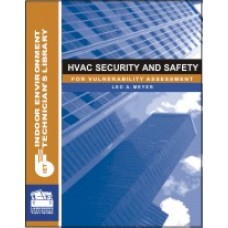
|
| Richard D. Alaniz |
On his first day on the job with Bacardi Bottling Corp. as a temporary worker, Lawrence Daquan “Day” Davis died in an accident after being crushed by a palletizer machine. The U.S. Department of Labor’s Occupational Safety and Health Administration (OSHA) eventually cited the company with 12 alleged safety violations relating to the death of Davis. When announcing the citations, the agency also said it was proposing nearly $200,000 in penalties.
“We are seeing untrained workers — many of them temporary workers — killed very soon after starting a new job. This must stop,” said Dr. David Michaels, assistant secretary of labor for Occupational Safety and Health, in a press release. “Employers must train all employees, including temporary workers, on the hazards specific to that workplace — before they start working.”
That accident, just one in a string of on-the-job temp fatalities, has raised concerns among government regulators. An April 29, 2013 memo announced new scrutiny on training and safety practices for temp workers. In the memo, the agency cited Davis’s death as an example of employer lapses. The memo calls on the agency’s regional administrators to direct field inspectors to assess whether employers who use temps are complying with their responsibilities under the Occupational Safety and Health Act of 1970. Among other things, inspectors are now also supposed to determine whether temps understand both the language and the vocabulary of the training they receive.
As OSHA ratchets up the scrutiny on temp workers, employers must understand and comply with their duties regarding training and safety, before accidents occur.
The Rise of Temporary Workers
The growing use of temps has provided benefits to workers and employers alike across the United States. Slightly more than 2 percent of the United States workforce consisted of temporary workers in November 2013, according to information from the U.S. Bureau of Labor Statistics. That ties a peak from more than 10 years ago, when the “temporary worker penetration rate” reached 2.03 percent in April 2000. Multiple factors have led to the growth of temp workers, including many employees’ desire for flexibility, companies’ need to remain nimble in an uncertain economy, and companies’ desire to employ fewer than the 50 full-time employees that triggers coverage under the Affordable Care Act.
OSHA’s New Focus
With the growth of temps, the number of on-the-job deaths of temp workers has also grown. Along with the death of the Bacardi Bottling worker, OSHA also recently cited Sherman Brothers Trucking Inc., doing business as Team Transport Inc., for 11 safety and health violations, including one willful, after an inspection that began when an improperly trained temp ended up dying from an oxygen-deficient atmosphere. OSHA has also recently reached a settlement agreement with Waste Management of New Jersey Inc. to abate violations about excessive heat hazards that caused the death of a temp worker.
According to the Bureau of Labor Statistics, in 2011, fatal work injuries involving contractors accounted for 12 percent of all work-related deaths. The “series of reports” on fatalities has spurred OSHA to increase effort to use enforcement, outreach, and training to protect temps, according to the memo that was released in April. Some of the recent deaths were caused by employers failing to provide safety training. In other cases, the training that was administered failed to adequately address hazards, which contributed to worker deaths.
OSHA has also become increasingly concerned that some employers may be using temporary workers to duck their compliance obligations. The agency has expressed concern that temps at some companies are being put in the most dangerous jobs and that they are not being given adequate safety and health training. In some situations, “temporary workers are more vulnerable to workplace safety and health hazards and retaliation than workers in traditional employment relationships,” according to the agency’s website.
The memo defines a “temporary worker” as someone placed by a staffing agency with an employer. The new focus includes both employers and employment agencies, with both being held accountable.
Under the direction of the memo, as part of their investigations, OSHA field inspectors must determine whether employees are temporary workers and, if so, if they are exposed to conditions that could create a safety violation. OSHA agents also use records reviews and interviews to evaluate whether temps have received the required training in languages and terms they can understand. According to the agency, recent inspections have identified situations where temps were not trained or had not received adequate personal protective equipment when working with hazardous chemicals, along with a lack of lockout/tagout protections, among others.
The memo also called on field agents to gather and track more information about “this vulnerable population.” As part of their inspections, OSHA agents are now supposed to list the name of the temps’ staffing agency, the agency’s location, and the structure under which the temporary workers are reporting. This information will focus on whether temporary workers are being supervised on a day-to-day basis by the host employer or the staffing agency, which can have implications for which employer is responsible for OSHA violations.
OSHA agents have quickly responded to their new duties. In the four months following the memo’s release, OSHA doubled the number of inspections of temporary staffing agencies, according to a report by Bloomberg BNA.
What Employers Need to Know
In light of this new emphasis by OSHA, employers need to take a fresh look at their use of temps, their relationships with staffing agencies, and how they train all their employees. When current practices are inadequate or outdated, companies must move quickly to augment and update them.
• Work closely with human resources and legal counsel.
The new emphasis calls for a multi-departmental response. When employers use staffing agencies for temp employees, it’s not always clear who bears responsibility for training and record-keeping. Companies should work very closely with human resources staff and legal counsel to clarify the job descriptions, supervisory authority, training, and record-keeping for temps. OSHA’s determination of the employee-employer relationship doesn’t necessarily hinge on who pays the temp. The agency can, and will, also look at how much control the employer has over how and when the temp’s job is done, and how the company’s policies apply to the temporary employees.
In a 2012 guidance letter to temporary staffing agency Staffmark, Galassi, the director of the Directorate of Enforcement Programs at OSHA, wrote that, generally speaking, “it is the responsibility of the temporary agency to ensure that employees have received proper training.” However, according to the guidance, in reality, even when the agency has given basic training, “the host employer provides the workplace-specific training appropriate to the employees’ particular tasks.”
Along with training, responsibility for record-keeping when injuries and illnesses occur among temps is not always clear-cut. When employees are inured on the job, employers are required to complete the OSHA 300 Log. According to the guidance, when the agency provides day-to-day supervision of temps, the agency is responsible. When host employers supervise temps, they should keep the logs. When the two share supervision, they need to reach an agreement over who should create and maintain the log.
• Review training methods.
Employers should take this opportunity to review their training manuals and procedures for temps to ensure that they are current and comply with all the appropriate rules and regulations. Employers should consider potential hazards of specific jobs and sites. This is also a good time to review job descriptions to make sure they align with safety training and the type of protective gear used on site.
• Make sure temporary employees understand training materials.
OSHA has explicitly said that temps must be able to understand training materials, in terms of both language and vocabulary. This may require translating materials into the native languages and dialects of temp workers.
• Check staffing agreements.
Employers need to carefully review their agreements with staffing agencies to ensure that the agreement provides for indemnification for any safety or health violations created by the temporary employee. OSHA also recommends that the agencies and employers outline their respective responsibilities for compliance in their contract. This will avoid “confusion as to the employer’s obligations,” according to the agency’s website.
However, regardless of what the contract says, employers should be prepared to fall under the scrutiny of OSHA if a temporary worker is injured or killed on the job.
• Stay up to date on developments.
Considering the new high-profile push to protect temp workers, employers should designate someone to carefully follow new developments, including updates to OSHA’s website at https://www.osha.gov/temp_workers/index.html.
Under federal law, employers are required to provide a worksite “free from recognized hazards that are causing or are likely to cause death or serious physical harm.” With its latest emphasis, OSHA has put employers on notice that they must treat temporary workers like permanent employees when it comes to training and safety and health protections.
Publication date: 1/20/2014









